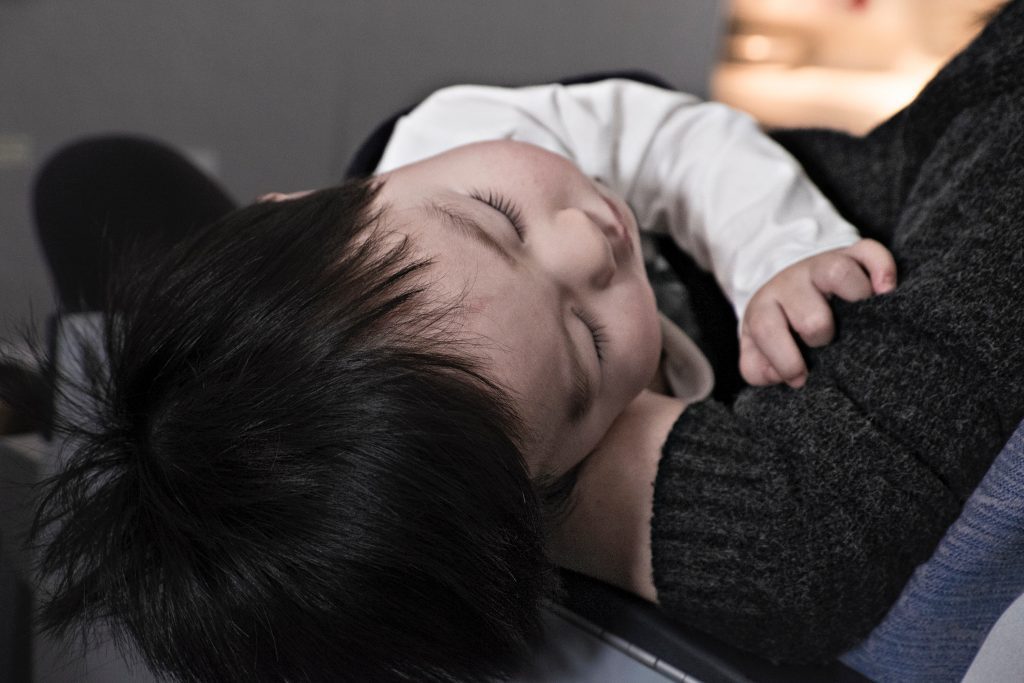Is your child struggling with falling and/or staying asleep through the night? You are not alone! Some interesting statistics show that the prevalence of at least one sleep issue in children with autism was, on average, 87%. Other studies have shown that up to 56% of families reported sleep issues in children with autism compared to 12.5% for those families with neurotypical children. The conclusion: Many parents struggle with this, especially those caring for a child with autism.
Sleep is crucial for everyone, especially for infants and children as they are developing both mentally and physically. Generally, it doesn’t take much effort to coax a baby to sleep, but as children’s brains mature their sleeping patterns evolve sometimes resulting in day/night confusion. For example, the child will sleep for long periods of time during the day and have long wakeful periods at night. While this can be troublesome, you must know – this is only a problem of timing and can be resolved! Healthy sleeping habits are not formed instinctively. Parents really do need to teach their children to sleep up until about the age of four.
Here are some helpful tips to support healthy sleep:
- Create a bedtime routine: Be sure to set up a bedtime routine starting at the same time each night. A relaxing bedtime routine will help your child develop good sleep patterns. This may be as simple as singing a song and using a white noise machine. With both toddlers and older children, allowing them to be a part of forming this routine creates buy in and gives them a sense of control. These plans may involve any number of the following:
- A warm bath
- Putting on pajamas
- Brushing teeth
- Using the bathroom
- Reading a set number of books
- Snuggles for a set amount of time
- Singing songs
- Dimming the lights
- Alone time
- Listen to relaxing music
- Meditation
- Discussing their day with you
- Turning on noise machine
- Lights out.
- Often putting together a chart with pictures helps the child to rehearse and ultimately follow the plan, staying on track.
- Regard the routine: Routines offer predictability and provide children with a sense of security. Both adults and children benefit from going to sleep and waking at the same times every day. This keeps our internal clock in a regular pattern. Make implementation of the bedtime routine a priority, even on weekends and holidays!
- Avoid screens in the bedroom: Television, smartphones, tablets and other devices affect the ease in which children fall asleep. The glow from electronics stimulates the brain leaving your child wakeful after operating them. This can inhibit the production of sleepy time hormones: melatonin and serotonin. Keep your child’s bedroom a screen-free zone. For older children this may mean having them charge their phones in a different room. Ideally, children should be off screens at least 1 – 2 hours before bed.
- Bedroom check and maintenance: Your child’s bedroom should be dark, quiet, and orderly, as these are ideal conditions for restful sleep. The temperature in your child’s room can also impact their sleep quality. Maintaining a comfortable sleep temperature is important. Do a bedroom check and determine whether your child’s bedroom is too warm, too noisy, or too bright. Forming a strong sleep association with the bed and bedroom over time make falling asleep easier. Ensure that all distractions and toys are cleaned up and put away before bed. Reserving the bed and bedroom for rest and sleep will strengthen this association.
- Nap times: Between the ages of 3 – 5 daily naps begin to phase out and become less regular. Keep an older child’s nap early and short. The later the nap and the longer the nap, the more difficult it is for your child to get restful sleep at night.
If you still have a sleepless child on your hands after implementing these tips to the best of your ability, it may be necessary for you to consult your pediatrician, a sleep specialist, or a board certified behavior analyst with specialized training in supporting appropriate sleep behaviors.

